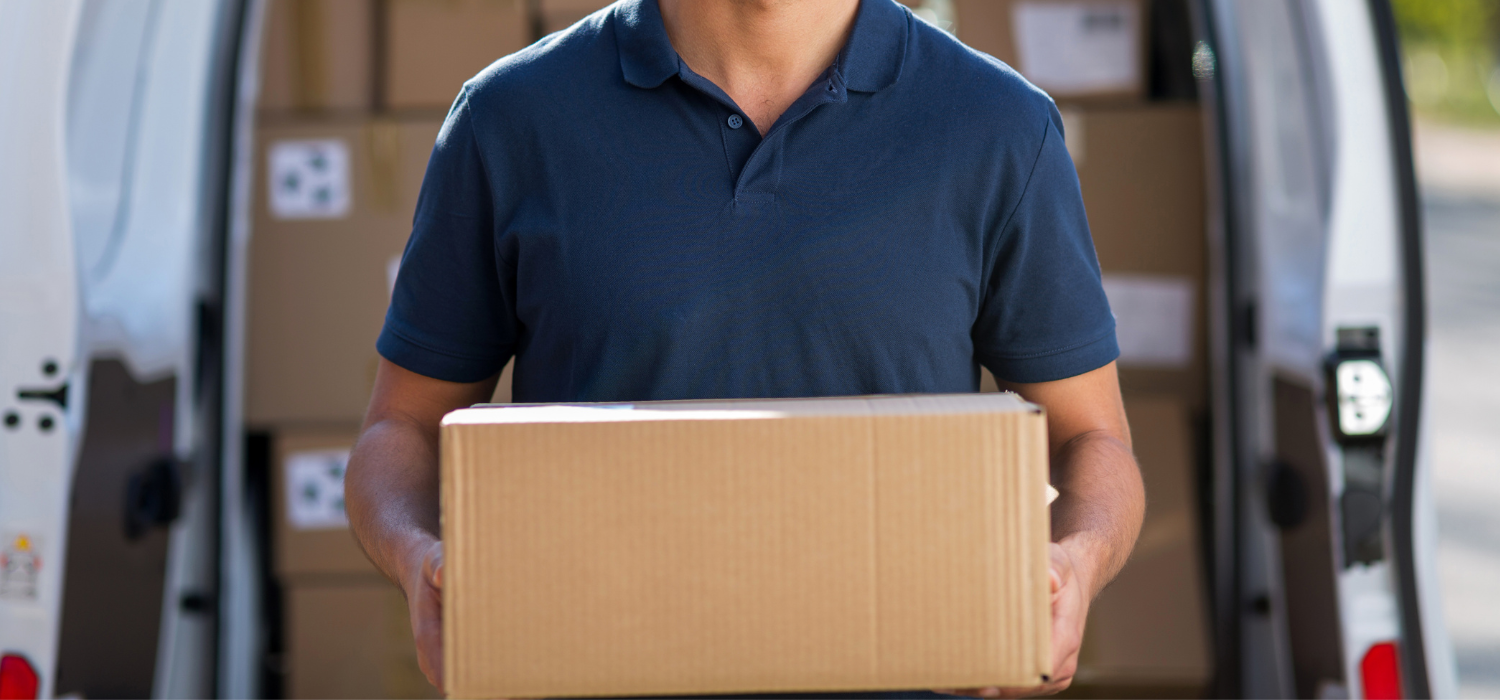In the era of eCommerce, an unexpected turning point is the return of physical shops as key players in last-mile logistics. In Italy and Europe, shops are turning into ‘phygital’ hubs: places where you sell, but not only. One ships, collects and returns, all in an integrated context.
This evolution is not only a response to the need for speed, but completely redefines the customer experience and the dynamics of the supply chain. But what does it actually mean to transform a shop into an Out Of Home hub, and what benefits does it bring for companies, logistics operators and consumers? Let’s find out in detail, starting as always with the latest data.
The return of the ‘hybrid’ physical shop
From pure online to ‘phygital’ omnichannelisation
In recent years, the boundary between physical and digital commerce has become increasingly blurred and retailers are focusing on hybrid strategies, integrating different channels and services.
This is where the ‘phygital’ model comes in, the approach that integrates the online and in-store shopping experience, creating a fluid, coherent and personalised path for the consumer.
Driving this phenomenon are, above all, impressive numbers: according to the eCommerce B2c Observatory of the Milan Polytechnic, in 2024 online purchases in Italy will exceed EUR 58.8 billion, with a growth rate of +6% compared to 2023 and a 13% incidence on the retail total (online+offline). A volume that tells not only of a rising digital demand, but also of the maturity of consumers and companies in reconciling different channels.
In this context, physical shops are taking on a new centrality: not only as places of sale, but as logistical extensions of eCommerce. Increasingly, they become pick-up, return or shipping points, turning into strategic hubs for the last mile. It is a silent but profound evolution that is redrawing the map of last-mile distribution in Italy and Europe.
A phenomenon driven by Out Of Home logistics
The transformation of eCommerce is not just about screens, but also – and above all – about how products physically reach the customer. This is why last-mile logistics is becoming the real terrain on which the efficiency of modern retail is being played out. In Europe, this final stage of delivery accounts for more than 30% of the total cost of the supply chain.
In the face of this increasing complexity, the Out of Home (OOH) model is gaining ground: deliveries that no longer take place exclusively at home, but at alternative locations such as points of sale, automated Lockers, kiosks or urban hubs. It is a concrete response to a growing consumer demand for flexibility, autonomy and speed.
In addition to improving the user experience, Out of Home logistics also enables more efficient and sustainable management for retailers: it reduces last-mile costs, enables consolidation of shipments and makes it possible to use physical shops as distributed logistics centres. In this way, the shop network becomes a real asset for digital commerce.
The Store as Out Of Home Logistics Hub
The main models
In the landscape of Out of Home solutions for physical shops, three main modes emerge:
- Click & Collect: the customer orders online and collects in shop. In this way, collection is quicker, often already the same day, and without additional shipping costs. How to offer a quality Click & Collect service, we also talked about in our dedicated guide.
- Ship from shop: the shop is no longer limited to serving only customers who physically enter, but becomes an active node for online orders as well. In practice, the shop is used as a mini-warehouse of proximity: when a customer buys online, the order can be processed directly from the nearest shop, rather than from a central logistics centre. This mode shortens delivery times, especially in urban areas, and cuts costs associated with traditional logistics, which often require long trips from the central warehouse. Another important advantage is the increased responsiveness in stock management: if a product is not available in the warehouse, it may be available in one of the network outlets. This helps to avoid stock-out situations and to make more efficient use of all distributed inventory.
- In-store fulfilment and returns: the shop is transformed into a real local logistics unit where online orders are prepared (picking, packing, shipping) and returns are handled. The main advantage is the proximity to the customer, who can return products directly in-store, without waiting or intermediate steps. This type of ‘in-person’ return significantly improves the after-sales experience, which is often decisive for loyalty.
Impacts on customer experience
The ability to pick up an online order within the same day or even within a few hours at a physical store saves the customer the uncertainty typical of home deliveries. It is not just about speed, but about freedom: choosing where and when to pick up means integrating the purchase into one’s daily routine, without constraints.
But it is in returns that in-store logistics really makes a difference. Returning a product directly to the shop, without having to pack it or send it back, simplifies one of the most delicate phases of eCommerce and, in fact, a quick and easy return process increases loyalty.
Operational benefits for online and physical stores
For eCommerce companies that choose to integrate physical shops into their logistics flows, the benefits are tangible. The Ship from Store mode, for instance, enables the utilisation of stock already present in shops, reducing dependency on centralised warehouses and lowering storage and transport costs. Orders are filled from the shop closest to the customer, shortening distances travelled and decreasing delivery times.
This strategy also has positive repercussions in urban areas: deliveries become more localised, journeys shorter and vehicles can be optimised to serve more customers in one area, with a significantly reduced environmental impact.
At the same time, physical shops are transformed into fully functional proximity hubs that improve operational efficiency and contribute to the sustainability of the entire supply chain. For retailers, this model represents a strategic lever to optimise processes, reduce last-mile costs and make the most of existing resources.
An Italian success story: the Decathlon model
Among the retailers that have best interpreted the evolution of the physical shop as a logistics hub is undoubtedly Decathlon. The sports equipment giant has developed a solid omnichannel strategy in Italy, based on the integration of eCommerce and the physical shop network. Its shops are not only commercial showcases, but operational hubs: they are used to fulfil online orders via Ship from Store mode, allowing fast and low-emission deliveries to neighbouring areas.
One of the most popular solutions among customers is the Click & Collect in 1 hour service, which allows them to buy online and collect the order in the chosen store within 60 minutes, thanks to the high synchronisation between digital systems and physical stock. Returns are also handled in a streamlined manner directly in-store, offering a smooth and convenient experience for both the customer and the company.
The result is a widespread distributed network that not only improves last-mile efficiency, but also allows Decathlon to make the most of its existing infrastructure, reducing costs and environmental impacts. It is a concrete example of how Out of Home logistics can become a competitive and sustainable asset.
Implementation challenges and solutions
While transforming physical shops into Out of Home logistics hubs brings many advantages in terms of efficiency and customer service, there are also some implementation challenges. For this model to really work, it is necessary to intervene on several levels: technological, organisational and infrastructural.
Technology and systems integration
At the heart of an effective OOH ecosystem is the IT infrastructure. Retailers need to equip themselves with advanced management systems capable of real-time synchronisation of inventory, orders, returns and sales, both online and in-store.
This is where tools such as the evolved POS, capable of dialoguing with cloud-based inventory, and the Order Management System (OMS), which coordinates multi-channel requests, come into play. Poor integration exposes the risk of misalignments between real and virtual stock, delivery delays and operational inefficiencies. Only a unified technology platform can ensure smooth and reliable fulfilment.
Staff training and omnichannel culture
Next to technology, another pillar is people. In the physical store, staff can no longer limit themselves to the traditional sales role: they now become active players in the supply chain. They handle online orders, prepare parcels for collection, receive returns and support customers in an omnichannel context.
This requires new skills, from familiarity with digital tools to knowledge of return policies and eCommerce platforms. Training is therefore essential to turn staff into customer advisors and logistics operators at the same time, capable of ensuring continuity between online and offline.
Urban logistics and environmental sustainability
Finally, the challenge is also played out on the urban and environmental level. The consolidation of deliveries to OOH points – such as shops, newsstands or lockers – makes it possible to reduce city traffic, decreasing the number of vehicles on the road and the overall environmental impact of last-mile logistics.
Local governments are starting to regulate the last mile with regulations and incentives for more sustainable solutions, promoting traffic-restricted zones, electric fleets and shared distribution models. Urban logistics are thus becoming not only more efficient, but also more compatible with the liveability of cities.
Towards a sustainable omnichannel future
The transformation of physical shops into proximity logistics hubs is therefore no longer just an experiment, but a concrete trajectory for the future of retail. The integration of physical stores and digital channels makes it possible not only to respond to new consumer habits, but also to rethink the whole logic of the last mile in a more efficient, sustainable and people-friendly way.
In this context, the shop takes on a new value, becoming a strategic node for urban distribution, capable of combining local presence, operational speed and logistical flexibility. But activating this model requires appropriate tools, renewed skills and technological solutions that truly connect physical and digital.
This is precisely where GEL Proximity comes in: with our Network of more than 300,000 Pick-up Points and Lockers that can be quickly and easily integrated into any eCommerce site, we help you quickly activate services such as Click & Collect, returns management and shipping.
If you have a Retail Network, you can upload your shops on the GEL Proximity map to offer your customers this service as a delivery option, but also disable a Proximity radius and enable other Third Party Points by presiding over areas of territory where your Retail Network is not present. You can then create a customised logistics UX on your check-out by combining your retail network with the Pick-up Points and Lockers of the GEL Proximity network.
What are you waiting for? Request a demo now!












